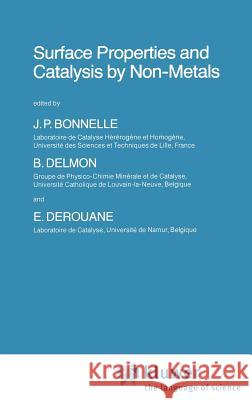Surface Properties and Catalysis by Non-Metals » książka
Surface Properties and Catalysis by Non-Metals
ISBN-13: 9789027716071 / Angielski / Twarda / 1983 / 562 str.
In the field of heterogeneous catalysis. it is convenient to distinguish. in a perfectly unjustified and over..simplified way. bet: leen metal catalysts. 2nd the other catalysts. The fj.J"st are easy to define: they are those in which a reduced metal is the active phase. It is thus easy to circumscribe. by exclusion, the other class namely the "non-metals." We have adopted this definition for the sake of our colleagues working on catalysis by metals, and to avoid a lengthy title like "sm' face pl"operties and catalysts by transi tion metal oxides. sulftdes, carbides, nitriles, etc. Defined in this manner, non-metal catalysts represented, in 1980, 84 wt. % of the industrial heterogeneous catalysts. To be more specific, this proportion corresponds to catalysts which, under the working conditions in the industrial ?lant. contain their catalytically active metallic elements in a non-reduced state. It should however be recalled that most metal catalysts are supported on oxides, which, often, repl'esent over 90% (sometimes 99.4% in the case of the platinum reforming catalysts) of the total weight."











